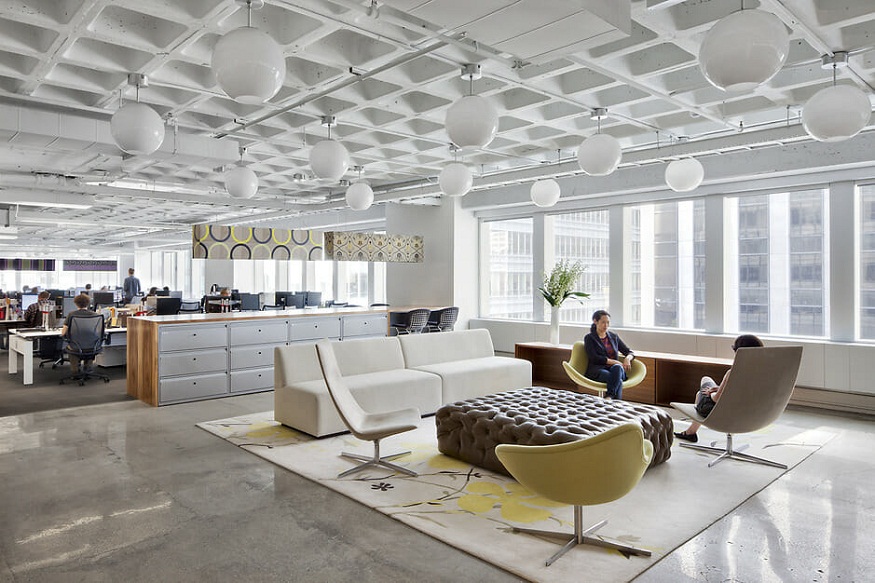Transforming small spaces into efficient and attractive rooms combines creative and practical solutions in design. Following good techniques, even small rooms can be neat and welcoming. To maximise space, an interior decorator or designer can perform magic with innovative furniture selection, creative space-saving solutions, and colour schemes. Helping in making a room appear larger is making use of available natural lighting and using multiple-use furniture. Be it a little apartment or a little space in an office, an interior designer and interior decorator can convert a room into a gorgeous and comfortable space. Professionals have experience making the best out of available space and converting problems into design opportunities.
Understanding The Role of an Interior Designer in Transforming Small Spaces
Interior designers are key in making space aesthetically pleasing. By efficiently using space and choosing and introducing aspects of colour and texture, they ensure every inch of space is utilised in a meaningful manner while personal style is accommodated.
- Optimizing Space Use: An interior designer is key to using every inch in a confined space. They are trained at designing creative solutions for opening rooms and making them usable. By designing furniture specifically for each room and arranging the room precisely and efficiently, they can use the room for multiple uses without making it claustrophobic. An interior designer understands how to place things to achieve flow, making space open and spacious. In addition to furniture, interior decorators will often include storage solutions that hide and keep things out of sight in their plans. Some may recommend space-saver furniture or creative solutions for concealing space using height, such as cabinets or wall units.
- Creating a Sense of Space: One of the key tricks to transform small spaces is using colour and lighting. Neutral and pale colours are utilised by decorators and can be applied to space perception. Pastel, cream, and white are some of the colours utilized since they reflect much light and can be applied to make a room look larger. Glass furniture or mirrors can be utilized by decorators in opening and reflecting space in a room. Moreover, lighting is another major contributor to making small spaces inviting. The lighting sources are specifically placed in a manner that prevents the creation of dark areas and throws light upon salient features in the room. They can achieve a comfortable space by layering lighting, such as overhead lighting.
- The Right Furniture Selection: Furniture selection is vital when designing for a limited space. An inside designer knows how to choose comfortable and good-looking furniture that does not crowd out space. The designer uses furniture sized in proportion to space, as compared to oversized furniture that causes space to be claustrophobic. They can suggest space-saving chairs or small sofas that are still comfortable without hogging space. Moreover, interior decorators opt for furniture that is utilised for multiple uses. A sofa bed or a dining table used as a desk is just one-way furniture can be utilised to maximise space. By using multifunction furniture, interior decorators enable homeowners to use space to its best.
- Adding Personal Style Without Overcrowding: Even a small room can be expressive and reflect the owner’s personality and style, thanks to an interior designer’s skill. The designer consults extensively with clients to know exactly what they like and dislike and ensures that the room is personal and hospitable. Yet, at the same time, they can prevent crowding in too much furniture or too much in the way of statement decor. Rather, they pick out key elements like artwork, rugs, and accessories and use them to complement the room without crowding it. Interior decorators suggest simple designs that contribute elegance without disturbing the room. They can reconcile personal style and functionality to make the room distinct.
- Optimizing the use of Hidden and Vertical Spaces: Interior decorators know that utilisation of space upwards is crucial when designing in limited space. Tall bookcases, hanging units, and stands mounted on walls are some solutions they would suggest in utilising space above head level. The solutions can direct eyes upwards, producing the illusion of larger room space and ceiling. By utilisation of space upwards, interior decorators can maximise space for use in a room while providing open and available floor space. In addition, some skilled designers can find space unseen for storage. For example, space at bed level for storage, hidden cupboards, or multiple-functional furniture with hidden space can refashion a room and keep it tidy.
- Adding Functionality with Zoning: Interior decorators in limited space use zoning techniques to separate different spaces for different uses, such as residing, working, or eating. Even in a room or limited space, a designer can separate spaces into different zones based on furniture, rugs, or different colour schemes. For example, a sofa can mark a residing area, while a bookshelf can separate a mini-work area. The zoning gives a perception of structure and form and makes each space in the room have a definite use without being overcrowded or confusing. Organising traffic flow is another zoning decision, ensuring no traffic blockages. The layout ensures smooth movement without making visitors feel claustrophobic.
- Display and Storage using Open Shelving: Open shelving is a space-saving way, and decorators are skilled at using it to maximise presentation and storage space. By using open shelves, decorators can maximise space for storage without installing cupboards or drawers. They use of potted plants or decorative accents and add personality to a room. Decorators should be careful not to overcrowd products on shelves since it can create a perception of messiness. Open shelving can open space and keep a room open since it allows for free flow and does not close a room. Decorators can style open shelves in a practical and yet attractive manner. Designers understand the challenges of limited space and cater to meet their needs.
Final words
To sum up, interior designers are pivotal in making little space efficient and attractive. They maximise every inch by smartly utilising strategies like multifunction furniture, planned colour schemes, and innovative storage solutions. By hiring them, even the smallest space is converted into a comfortable and attractive place for residing. To ensure better outcomes, hire the best interior company in UAE, known for being skilled and an expert in design. These elements enhance the visual appeal and improve the practicality of smaller spaces.

